Publications

|
MK Surappa Effect of melt temperature on microstructural and strength properties of in-situ aluminum metal matrix composites containing SiCNO particles https://journals.sagepub.com/doi/abs/10.1177/00219983231158737 Co-Authored With Arul Pandian, Nagaraj M Chelliah and Pradeep K Rohatgi. Journal of Composite Materials Vol. 57(9).pp 1571-1578 Polymer Injection Pyrolysis (PIPs) can be adopted to synthesize in-situ ceramic particles within molten metal by stir-casting process. This paper investigated the effect of pyrolysis temperatures on microstructural and strength properties of in-situ aluminum matrix composites containing 2.5 vol% of SiCNO particles. In-situ composites were synthesized by stir-mixing of cross-linked polysilazane at four different pyrolysis temperatures (675–850°C) at which in-situ pyrolysis occurred and then followed by ultrasonic agitation and squeeze casting process. Microstructural data reveals that grain size and the particle size of SiCNO particles decreases with increasing the temperature of the melt at which polymer was introduced into the melt. The increase in the strength properties of the fabricated composites as compared to pure aluminum is almost 210% for the composites fabricated at 850°C while it is marginally 17% for the composites fabricated at 720°C. Fractography studies suggest that composite fabricated at 675°C exhibits a better combination of yield strength and ductility. |
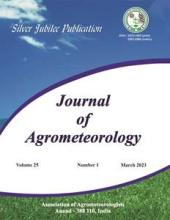
|
Vinay Kumar Dadhwal Revisiting statistical spectral-agrometeorological wheat yield models for Punjab using MODIS EVI and NCMRWF re-analysis temperature data https://journal.agrimetassociation.org/index.php/jam/article/view/2067 Co-Authored with Yamini Bhat, Journal of Agrometeorology, 25(1), 10–17. |
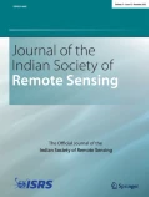
|
R Srikanth Application of Geospatial Techniques and the MCDM Method to Optimize Interlinking of Rivers in India https://link.springer.com/article/10.1007/s12524-023-01672-6 Co-authored with Ahmed, A. (2023). Application of geospatial techniques and the MCDM method to optimize interlinking of rivers in India. Journal of the Indian Society of Remote Sensing, 51(4), 849-863. |
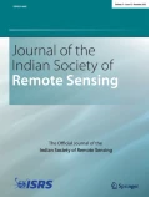
|
Aariz Ahmed Application of Geospatial Techniques and the MCDM Method to Optimize Interlinking of Rivers in India https://link.springer.com/article/10.1007/s12524-023-01672-6 Co-authored with Srikanth, R. (2023). Application of geospatial techniques and the MCDM method to optimize interlinking of rivers in India. Journal of the Indian Society of Remote Sensing, 51(4), 849-863. |

|
Janaki Balakrishnan Predicting climatic tipping points https://aip.scitation.org/doi/10.1063/5.0135266 Co-authored with Sunny, Eros M and Kurths, Jürgen. Chaos: An interdisciplinary Journal of Nonlinear Science, 33 (2) Increased levels of greenhouse gases in the atmosphere, especially carbon dioxide, are leading contributors to a significant increase in the global temperature, and the consequent global climatic changes are more noticeable in recent years than in the past. A persistent increased growth of such gases might lead to an irreversible transition or tipping of the Earth’s climatic system to a new dynamical state. A change of regimes in CO2 buildup being correlated to one in global climate patterns, predicting this tipping point becomes crucially important. We propose here an innovative conceptual model, which does just this. Using the idea of rate-induced bifurcations, we show that a sufficiently rapid change in the system parameters beyond a critical value tips the system over to a new dynamical state. Our model when applied to real-world data detects tipping points, enables calculation of tipping rates and predicts their future values, and identifies thresholds beyond which tipping occurs. The model well captures the growth in time of the total global atmospheric fossil-fuel CO2 concentrations, identifying regime shift changes through measurable parameters and enabling prediction of future trends based on past data. Our model shows two distinct routes to tipping. We predict that with the present trend of variation of atmospheric greenhouse gas concentrations, the Earth’s climatic system would move over to a new stable dynamical regime in the year 2022. We determine a limit of 10.62 GtC at the start of 2022 for global CO2 emissions in order to avoid this tipping. The Earth’s climate has seen many changes over the years, affecting the physical environment (be it terrestrial, marine, or the atmosphere). These major changes or regime shifts from one stable dynamical state of the physical environment to another, each of which may persist for several years, produce major shifts in natural ecosystems involving trophic structures, changes in composition, and abundance of species. The climatic system moves over to a new regime once it crosses a climatic tipping point—a threshold crossed irreversibly by the system’s dynamics. Anthropogenic influences brought about in the physical environment invariably contribute in a substantial way to climate change globally as the dynamics of the climatic system is governed by the coupling between the land, the atmosphere, and the oceans. An increase in levels of greenhouse gases in the atmosphere mainly caused by human activities, especially carbon dioxide, has been one of the important contributing factors leading to climate change in the last few decades. We present here a theoretical model that well captures the rate of increase of the total global concentrations of carbon dioxide, the major contributing greenhouse gas in the atmosphere. We then employ the concept of rate-induced bifurcations to demonstrate that it is possible to determine the climatic tipping points from our model. This way, we predict that the climatic system would relocate to a new stable state early in the year 2022. It has been widely accepted that tipping point mechanisms can be used to study climate change. In this paper, we shall introduce and apply a rate-induced tipping model to global fossil-fuel emissions data. Our model shows two distinct routes in which tipping can occur, and the parameters describing these can be calculated from data and are physically measurable. Through the application of this model, we identify crucial tipping points, which lead to climate change and quantify exact boundaries crossed that induce tipping. Control can be exercised over the parameters describing tipping, if desired, such that tipping can be prevented. The methods developed can further be applied to any growth curve that may have undergone rate-induced tipping. |
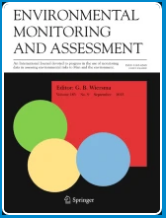
|
Vinay Kumar Dadhwal Rubber expansion and age-class mapping in the state of Tripura (India) 1990–2021 using multi-year and multi-sensor data https://link.springer.com/article/10.1007/s10661-023-10942-2 Co-Authored With S. V. Pasha & C. S. Reddy. Environmental Monitoring and Assessment. 195, 348 (2023). |
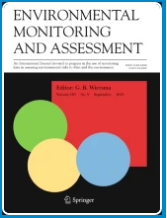
|
Shaik Vazeed Pasha Rubber expansion and age-class mapping in the state of Tripura (India) 1990–2021 using multi-year and multi-sensor data https://link.springer.com/article/10.1007/s10661-023-10942-2 Co-Authored with V. K. Dadhwal & C. S. Reddy. Environmental Monitoring and Assessment. 195, 348 (2023) |
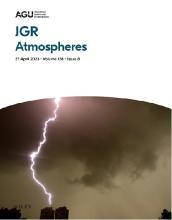
|
Vinay Kumar Dadhwal Multi-Year CALIPSO Observations of Ubiquitous Elevated Aerosol Layer in the Free Troposphere Over South Asia: Sources and Formation Mechanism https://agupubs.onlinelibrary.wiley.com/doi/10.1029/2021JD036277 Co-Authored with Kumar, G., Madhavan, B.L., Sahu, L.K., Kumar, Y.B., Vernier, J.P., Liu, H., Zhang, B., Pandit, A.K., Manchanda, R.K.& Sinha, P. R. . Journal of Geophysical Research: Atmospheres, 128(2), e2021JD036277 |
